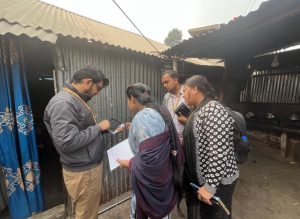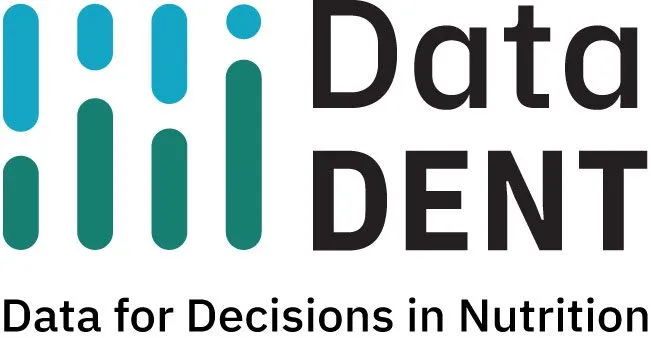Over the last two decades many low-and-middle-income countries (LMICs) have developed multi-sectoral nutrition policies to address high rates of malnutrition across their populations. As of 2022, 45 out of 66 Scaling Up for Nutrition (SUN) countries have a national multi-sectoral nutrition policy, the remaining countries are working towards such policies. However, few countries have sufficient data on the reach or coverage of nutrition interventions across sectors to effectively monitor and support multisector policy implementation.
To help address this gap, DataDENT is implementing the One Nutrition Coverage Survey (ONCS), a methods-focused study that includes piloting new and standard household survey metrics for assessing coverage of multi-sectoral interventions delivered to households and interventions targeted to vulnerable individuals across the life course. The ONCS is being implemented in Bangladesh, a country recognized for its comprehensive multi-sector nutrition policy and programming landscape.
Measuring coverage across life stages and at the household level
The ONCS is currently being conducted across four districts in Bangladesh. It will serve as a proof of concept for whether a comprehensive household survey module for multisector nutrition intervention coverage is feasible to implement at scale. Direct validation of responses will not be conducted, but we will compare estimates to other available data sources.

Image 1. ONCS data collection team in Bangladesh, PC: DataDENT
The survey tool includes questions about nutrition interventions in health, WASH, agriculture, and social protection sectors, as aligned with national policies. It includes standard maternal, infant, and young child nutrition (MIYCN) indicators like vitamin A coverage and several new indicators developed or refined by DataDENT: MIYCN counselling, maternal micronutrient supplementation, nutrition-sensitive social protection (NSSP), and large-scale food fortification (LSFF) (Image 2).
During analysis, we will use the district-level representative data to estimate coverage and co-coverage of multisector interventions. Most household surveys report coverage of individual interventions; co-coverage estimates reflect who is being reached with a combination of interventions. We will assess equity through disaggregation by residence (urban vs. rural), district, and education. We will also disaggregate using the vulnerability segmentation methods developed by the Pathways Project. The goal of co-coverage and equity analysis is to provide governments with actionable insights into coverage gaps and guide more effective, equitable policy decisions.

Image 2. Interventions included in the ONCS in Bangladesh
Survey cost considerations
Including multi-sectoral nutrition intervention across each life stage in a household survey can be costly to both the survey implementers and the respondents because of the sample size and questionnaire length needed to capture intervention coverage across a wide range of target groups. The ONCS will assess the monetary costs, and the level of effort required to implement the survey module, as well as the time burden to respondents.
The ONCS aims to strengthen several components of the nutrition data value chain across countries by refining coverage measurement indicator definitions, testing data collection methodologies, using innovative analytical approaches and ultimately providing actionable insights to guide policy improvements in Bangladesh and other countries that take up the module.
ONCS data collection is ongoing in Bangladesh through May 2025. By the end of the year DataDENT will capture methods insights and share data collection tools in a methods toolkit. We will also share analytical outputs specific to coverage and co-coverage of multisector nutrition interventions in Bangladesh.
For more information about the ONCS protocol, check out this preprint on VeriXiv. Follow DataDENT social media to know when the ONCS toolkit is available.
